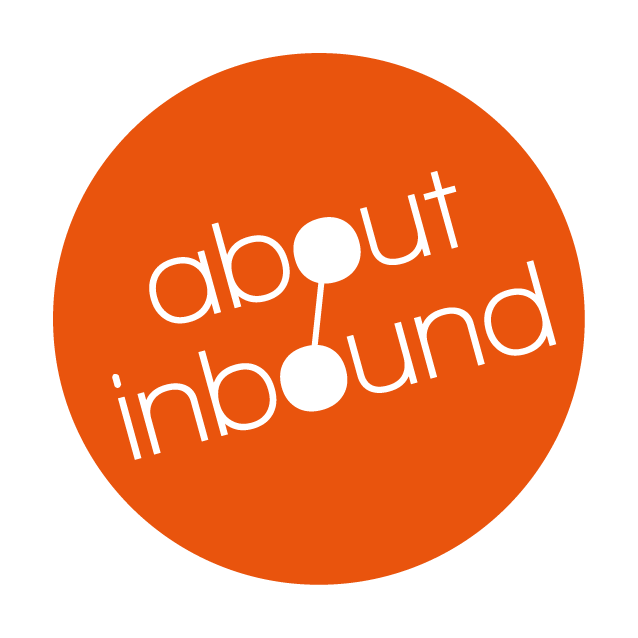The startup world is so dynamic and different from the world of Enterprise, that it can be extremely difficult to anchor your growth with the appropriate processes. Bringing in quality leads and converting them into customers is always a top priority in business but any startup growth model is by definition very dynamic. This makes it extra difficult to build the right inbound sales team and put in place the right sales processes to support the rapid growth and flexibility needed for your startup to be successful.
Full video of "Building a sales team and a sales process" webinar/presentation
(hover over to see the index):
To support startups that would like to build there organisations using the inbound model. Hubspot have put in place a great programme which includes both major discounts and lots of training and coaching benefits. Experts in the fields are attracted and provide training on all aspects of business and how to apply inbound principles to them.
This content is based on the first webinar of a 4 part series 'Inbound Sales for Startups'. Presented by Vourneen Taylor of About Inbound at Hubspot's EMEA HQ in Dublin to a mixed audience both online and in the room.
Audio podcast of the webinar on sound cloud:
The post below contains key extracts from the above webinar presentation aswell as additional content optimized for quick reading. If you are interested in any of the topics covered in the below post, I recommend watching/or listening to the above video/audio as it contains many more insights and interesting questions and answers from interaction with the audience. If you come across a specific area of interest below, you can use the above video's indexing (Hover over the video for this to become visible) to skip straight through to the corresponding slide/section.
1. Why you need to focus on creating an inbound driven sales team and integrate sales throughout your organisation:
Traditionally, sales departments have always been seen as key to operating and growing your business. This is no surprise as, without the sales department there would be no revenue, right? Sales is the department responsible for bringing in the deal.. Now ask yourself this:
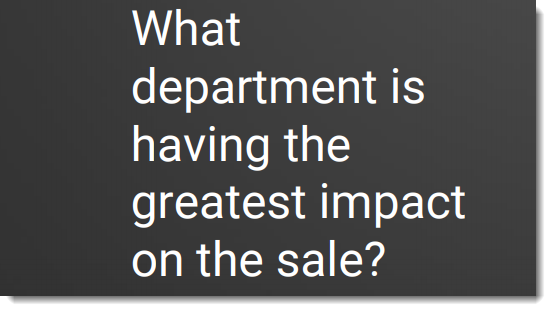
Would you say the Sales department? You would be wrong. These days:
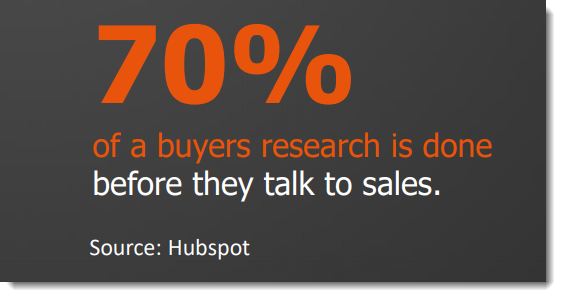
This is a huge amount of pre-sales research and deliberation on which your sales team has an influence. chances are that it is your companies marketing materials that will drive your prospects to engage with your sales team and that they only do so when the they are ready to purchase a product or service that they have already found your offer.
Another important distinction to be aware of is that while sales are a great starting point for success, it's actually revenue that drives growth. So which department do you think has the greatest impact on revenue?
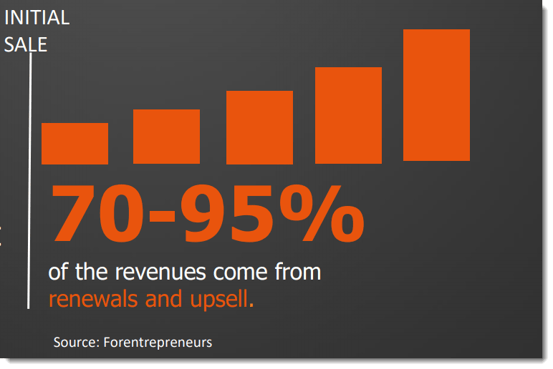
As you can see from the stats above, by far the most revenue is generated by your customers after the initial sale. This means that your services departments can have a lot of impact on the amount of revenue that is generated from your customers. As you can see there is no question that in todays world you need to allow all your departments to come together for revenue generation opportunities.
Buyer Profiles:
Your marketing and sales execs will likely already know about and hopefully starting using Buyer persona's to define your ideal customers and you might be tailoring your marketing materials and sales conversations to them, but have you looked at your buyer profiles? A buyer Profile goes further than identifying just the person you are selling to. Creating a buyer profile allows you to identify your ideal target companies as well as the companies that won't be a good fit for your offerings. Creating a buyer profile and company persona allows you to focus your efforts on the prospects that will generate the most value for your organisation and who you can add most value to. The above webinar contains an activity to help you identify your buyer profile (you can find it using the videos index). Have a look at this example of an ideal Mid-Market Company Persona:
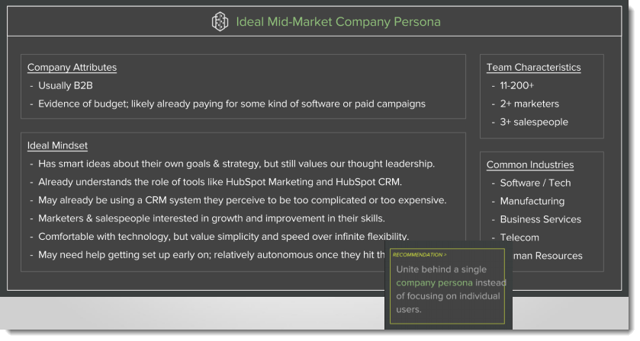
Match your buyer to your seller:
Once you get clarity about the companies and persona's to target, it is time to also looking closely at who is doing your selling. Don't forget that in the end in todays automated landscape of Sales tools and even with all the options that allow your buyers to purchase their service without personal contact with your sales reps. This is still a H2H (Human 2 Human) process. This makes it very important to build your team around your customer and their needs.
Ask yourself this:
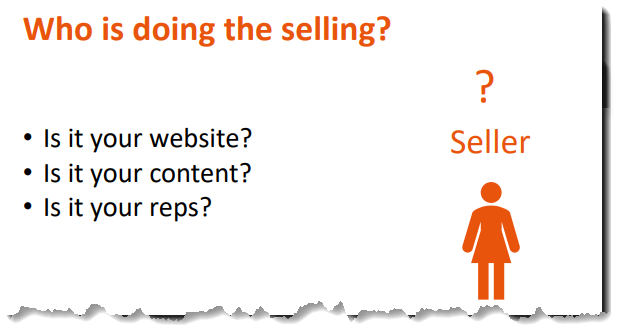
The type of selling that your organisation focuses on, will have a big impact on the type of seller you will want to employ. Getting this clear will help you to find suitable staff to build out your team. There are of course a lot of important factors to consider when hiring new staff but here are a few that will enable you to build a strong foundation on which to grow your team's and therefore organisational success:
- Hire for coachabillity (experience is one thing but it's no match for being able to learn
- Culture = Employer branding - You'll want to be known for being a quality brand for your buyers and sellers alike
- Having shared revenue goals aligns your departments behind your common goals
- Ensuring that all your staff engage in continual learning will give you a competitive advantage.
| TIP: Index 15 in the video contains the full details on this to get the presented version for more information. |
2. How to go about building your sales process the inbound way:
Now that we have established an idea about how to look at how to close the right buyers and attract the right staff to your brand, we'll have a look at how you can optimize your Sales Processes, but before we go in to the practical we will have a look at sales methodologies:
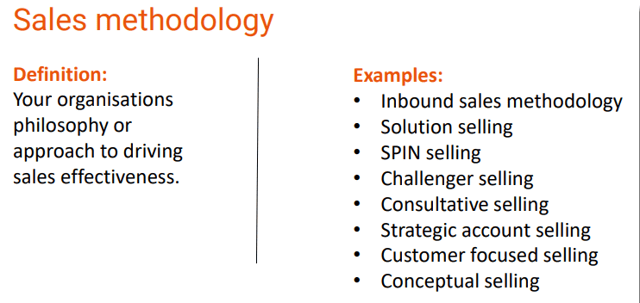
As you can see above there are many examples and many of you will know some of these. We are focusing on the inbound sales methodology and will go into how to build the right processes based upon it. It's important to learn your methodology by hard and consider how the processes that you put in place related to it. The inbound Sales methodology consists of a number of phases. These phases are mapped to different moments in the buyers journey and describe their thought process and reasoning throughout each phases. The idea here is to makes sure that the sellers actions in terms of of data gathering/contacts etc can be optimized to make for the most helpful and personalised experience possible throughout all stages:
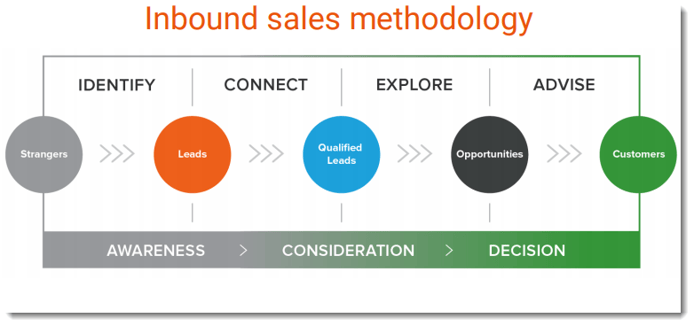
Now that you have an idea how the inbound sales methodology looks. Lets have a look at how that relates to the inbound sales process and inbound sales philosophies:
What the inbound sales process is:
So what do we mean exactly by a 'sales process'? The definition of a sales process is:
A set of repeatable steps that your sales team takes with a prospect to move them from the early stages in the buying process to a closed customer.
As such, it naturally hooks in to the ales methodology stages and adds actionable processes to each phase. Some examples of sales processes that you might already know are:
- Inbound Process
- SPANCO
- BANT
- MEDIC
- GPCT
Any inbound sales process should always be underpinned by the philosophies of inbound sales both on a team and an individual level:
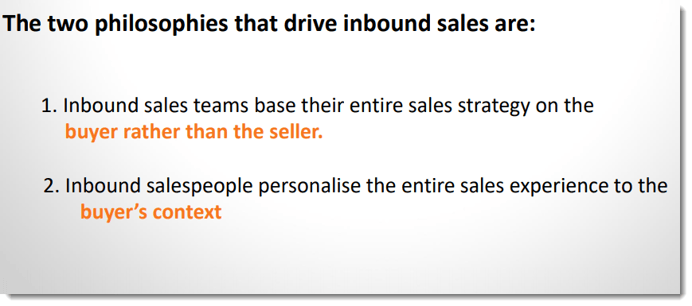
To ensure the highest value outcomes for both the buyer and the seller. The following principles should underpin the entire set of processes at any phase of the methodology:
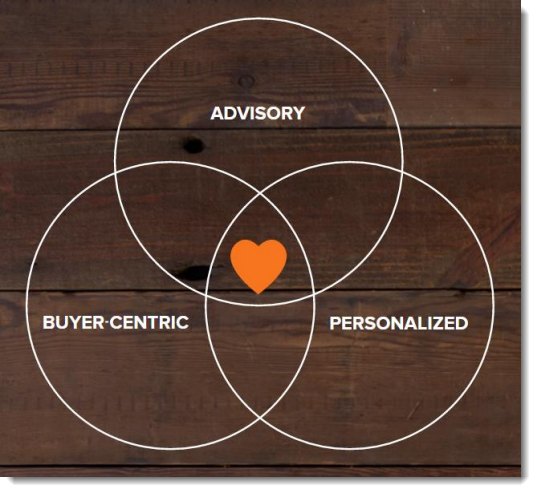
Make sure that you always aim to apply these 3 principles to all actions during the sales process to ensure your process is as successful as it can be.
Inbound sales processes to use at the identify stage:
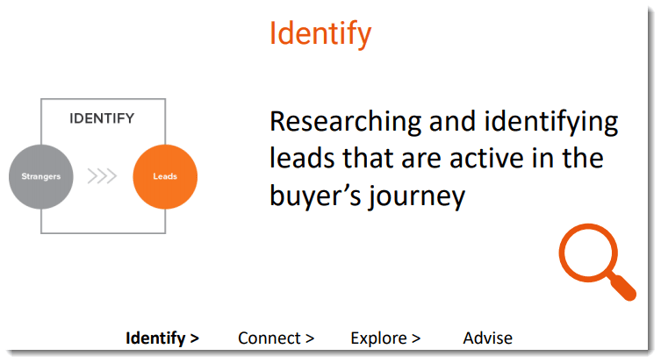
The fist stage is all about data gathering and processing. In essence it means identifying strangers and converting them into leads. An example of an action that occurs at the identify stage is a visitor on your website submitting their email address. At this point, they have shown an interest and will have become a lead. You now have their contact information and can start doing research to find out more information about them. This research should show whether the contact is showing further signs of interest. If they do, they are likely to be an active buyer. Inbound sales people should always prioritise active buyers over passive buyers.
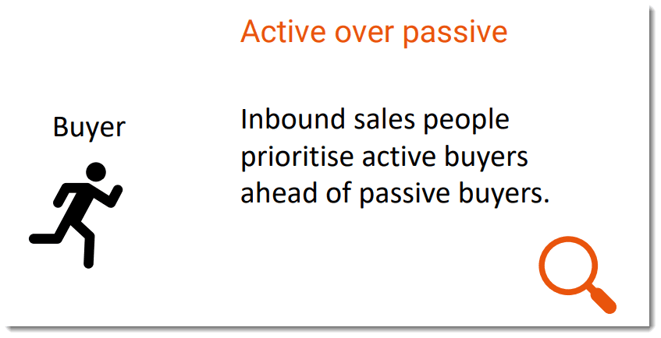
The webinar video contains tips and processes that will help you sort new prospects into active buyers versus passive buyers using using Hubspot's sales tools. There are many sources you can use to identify active buyers by trigger events. Trigger events can identify changes in a person or companies circumstances that can indicate that they are looking for a particular product or service. If your organisation can offer a product or service that fits their needs this might turn them into a potential active buyer. These days we all share a lot of information about ourselves to the public domains and as such a wealth of possibilities exists to identify trigger events which may turn a prospect into an active buyer. Here are some tools and ways you can find out about active buyers by using trigger events:
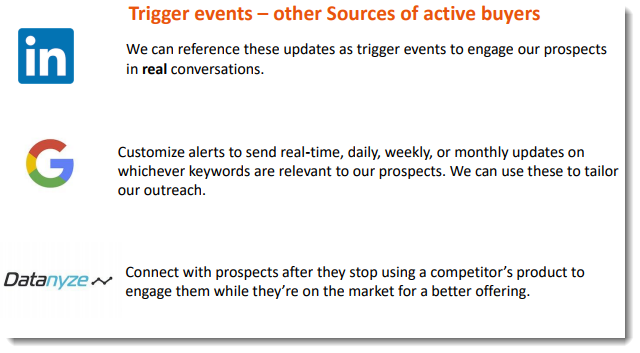
There are tools that allow you to identify these trigger events based on public information and at no or little cost.
There are many signs that can identify contacts that are engaged and if you have the right tools you should be able to segment the data of your contacts to filter out the engaged/active buyers:
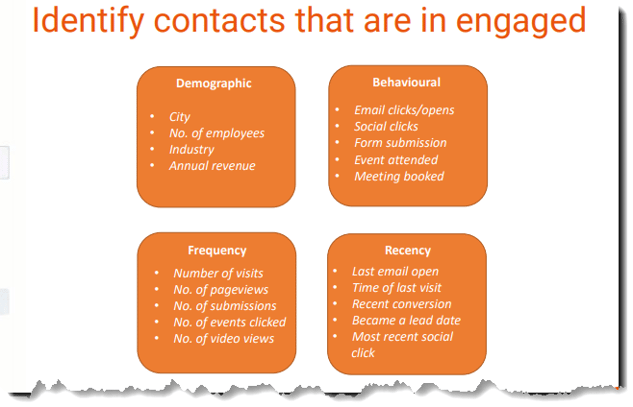
Here are some good contexts and data points to use when identifying which contacts are engaged. In the webinar Vourneen discussed this in detail and showed some examples on how to utilise these using the Hubspot sales tools.
Inbound sales processes to use at the Connect stage:
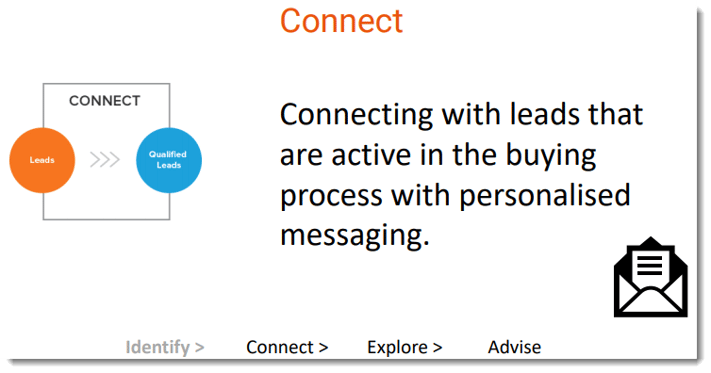
Now that we have identified our leads, we will move on to the Connect stage. It's time to engage with them using personalised messages that will help them progress along the buyers journey. When communicating with your leads, remember these key points:
- Choose a good starting point for your message (e.g. a trigger event or referral).
- Tailor your message to each buyer. even a small personal tweak can have a big effect.
- Engage with your clients using sequential messaging (see the webinar for how hubspot can be utilised for this purpose.
- Don't send out large bulk emails to your buyers at high frequencies, send tailored messages instead and qualify their responses for follow up to qualify their interest.
It's important here to automate the processes that are repeatable but mix in personalised touches. Don't forget. More productivity does not always mean more ROI.
Let's look at an example of how more productivity does not lead to better ROI:
Say you have set up a sequence that sends 10 emails to your buyers in the connect stage. That's very productive amount right? At what point would your buyer get tired of seeing the mails clogging up their inbox though? The value of the content of each item would have to increase each time to avoid them being irritated. This irritation will likely stop them being an active buyer or worse to consider your offerings again at all in the future.
Now lets say you send 3 sequenced emails to them instead. Each with a bit of personalisation and some content that is likely to add value and with a good call to action to allow them to confirm their interest or not. Each email should follow up based on the context of their feedback (or lack of feedback).
In productivity terms you have send out way less emails. However your buyer is way more likely to stay engaged, and if they are not you can make an informed decision on how to proceed or disengage.
Check out the webinar video or audio to see examples of how to work through the connect stage using Hubspots tools followed by some interesting discussion around what is a good frequency to send out communications.
Inbound sales processes to use at the explore stage:
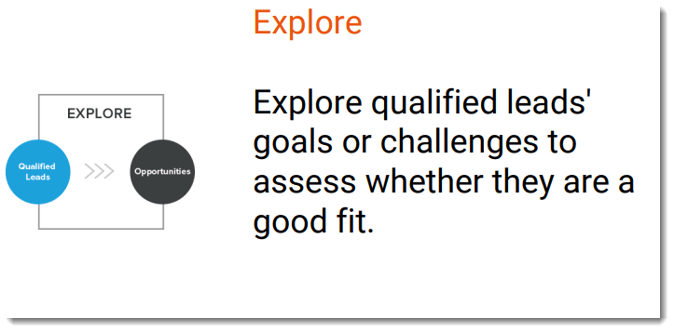
Now that you have confirmed that your buyer is really engaged and your getting signals that they are interested, it's time to look at their needs and weather your offerings are a good fit for their needs. It's important to make sure you look over all information that you have gathered during the previous stages so you minimize the chance that you asked them for the same information multiple times. This is also a good time to set up the call to get further details about their challenges, recap on their goals and discuss with them how your offerings might fit.
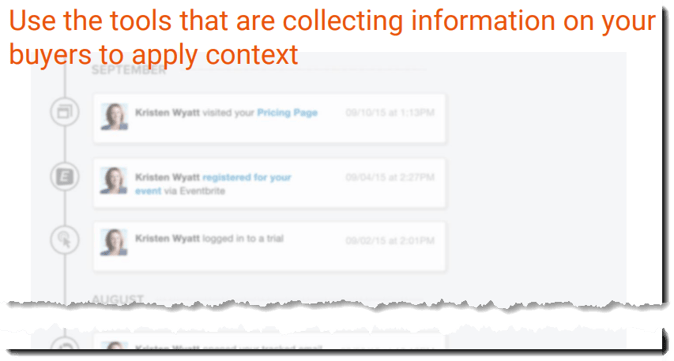
A great trick to improve the quality of your call at this stage is to send out a survey related to the call you are scheduling before the call and getting the potential customer to fill this out beforehand. The survey should contain general questions that are specific to the buyers interest that you don't have answers for yet. In case of a service offering this could be timelines and cost expectations for example, but the best set of questions depends on your offerings. This will also give you more clues as to how engaged they are. If they are happy to fill out a survey on the offerings specifics this is another good indicator that they are eager to progress. Check out the webinar video or audio for some additional discussion around this.
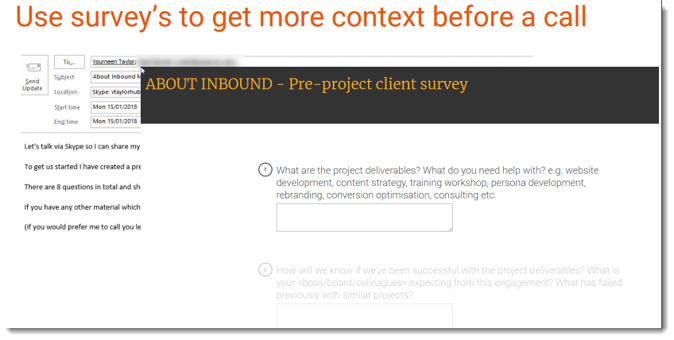
>> HERE IS A LINK TO OUR PRE-PROJECT CLIENT SURVEY
Make sure to take notes during the call and log the activity in your tool of choice. The goal of the call is to explore with your customer whether the buyer is a good fit for your offerings and if your offerings fit their needs. It's important to always end the call with an clear and actionable next steps. Follow up with helpful content based on your conversation where possible. Be very clear and add time frames to any follow up on the actions. It's important that you set a time and date for any follow up calls or contacts as this will result in higher engagement and keep the process clear for both seller and buyer. This will allow you to establish trust and a will maximize the opportunity for closing the deal.
Inbound Sales Processes to use at the advisory stage.
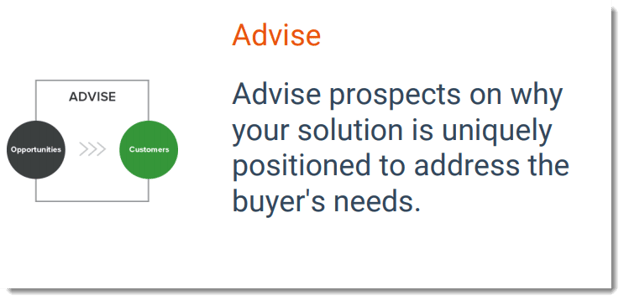
At this point, you should be certain that your offering fits the buyers needs and that they are able to invest in the time, resources and funds required to adopt your solution. It's time to advise them how your offering adds value and gives them Return On Investment. Product demo's are ideal at this stage of the buyers journey as they showcase your solution and allow you to address any questions or concerns they might have in a practical way. Make sure to customise the demo to address the buyers context based on the information you gathered and discussed. Remember the right context and the personal touch go a long way to closing the deal!
